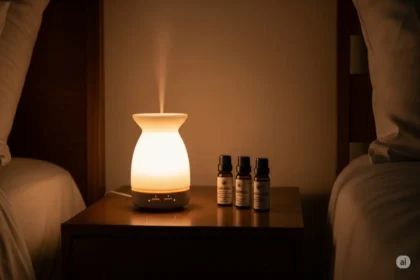The world of dreams, often a whimsical landscape of the subconscious, can sometimes morph into a chilling theatre of our deepest fears. Nightmares – those vivid, disturbing dreams that jolt us awake with pounding hearts and lingering dread – are an unpleasant but, for many, occasional part of the human experience. We dismiss them as mere bad dreams, perhaps the result of a spicy meal or a stressful day. But what if these nocturnal terrors held a deeper, more ominous significance? Emerging scientific research suggests a fascinating, and frankly, disquieting link between frequent nightmares and the pace at which our bodies age at a cellular level. It’s a connection that points to a potentially deadly interplay between nightmares and biological ageing, urging us to pay closer attention to the quality of our slumber.
For decades, sleep scientists have understood that sleep is far from a passive state; it’s a critical period of physical and mental restoration. But the idea that our dreams, particularly our most distressing ones, could be a silent harbinger of accelerated aging feels almost too fantastical to be true. Yet, a growing body of evidence, fueled by sophisticated imaging techniques and genetic analyses, paints a compelling picture. It turns out, those terrifying nocturnal narratives might be more than just a fleeting fright; they could be a stark warning from our own internal timekeeper.
The Brain’s Nocturnal Lab: Where Dreams and Age Collide
To understand this intricate connection, we must first delve into the sophisticated machinery of sleep and the subtle nuances of dreams. Nightmares primarily occur during REM (Rapid Eye Movement) sleep, the stage of sleep characterized by intense brain activity, muscle paralysis, and vivid dreaming. During REM, our brains are essentially running a complex simulation, processing emotions, consolidating memories, and even attempting to solve problems from our waking lives.
When this simulation goes awry, manifesting as a nightmare, it often involves a surge of activity in the amygdala, the brain’s fear center, and a heightened stress response. This acute physiological stress, even if contained within a dream, can have real-world repercussions on the body. Prolonged or frequent exposure to such stress, day or night, is a known accelerator of the aging process.
Think of it this way: every time you experience a nightmare, your body undergoes a mini “fight or flight” response. Your heart rate elevates, breathing becomes shallow, and stress hormones like cortisol flood your system. While a singular event is unlikely to cause significant damage, a consistent pattern of these nocturnal alarms can contribute to chronic systemic inflammation and oxidative stress – two key drivers of cellular aging.
Consider Maria, a successful architect in her late 40s. For years, she dismissed her recurring nightmares as a quirk. Often, they involved variations of being trapped or chased, leaving her waking up in a cold sweat. She managed to function, but she often felt perpetually tired, even after a full night’s sleep. What she didn’t realize was that these nightly terror-induced stress responses might have been contributing to her biological clock ticking faster than her chronological one. Her body was constantly on high alert, even during sleep, subtly chipping away at her cellular resilience.
Telomeres: The Canary in the Coal Mine of Aging
The scientific hunt for biological aging markers has increasingly focused on telomeres. Imagine telomeres as the protective caps at the ends of our chromosomes, much like the plastic tips on shoelaces. Their job is to protect our genetic data from damage during cell division. Every time a cell divides, these telomeres shorten slightly. When they become too short, the cell can no longer divide effectively and either dies or enters a state of senescence (cellular aging), contributing to tissue dysfunction and the overall aging process.
Stress, particularly chronic stress, has been directly linked to accelerated telomere shortening. The repeated activation of the stress response, as potentially triggered by frequent nightmares, creates a cascade of biological events – inflammation, oxidative stress, and increased cortisol – that can hasten this telomere attrition.
Research published in journals like Sleep and Aging Cell has begun to explore these connections. While direct causal links are still being elucidated, studies are showing associations between poor sleep quality, sleep disturbances (including nightmares), and shorter telomere length. It suggests that sleep, and the quality of our dream experiences, might be a critical regulator of our cellular lifespan. It’s not just about how long we live, but how well we age.
Beyond Telomeres: The Broader Biological Fallout
The connection between nightmares and accelerated biological aging isn’t confined solely to telomeres. It extends to broader systemic impacts:
- Inflammation: Frequent nightmares can contribute to low-grade, chronic systemic inflammation. This persistent inflammatory state is a known driver of various age-related diseases, including cardiovascular disease, neurodegenerative disorders, and metabolic syndrome. Our immune system, constantly reacting to perceived threats in the dream state, can become dysregulated.
- Oxidative Stress: The stress response triggered by nightmares can lead to an increase in reactive oxygen species (free radicals), which damage cells and DNA. Over time, this oxidative stress accumulates, contributing to cellular damage and accelerated aging.
- Hormonal Imbalance: The repeated cortisol spikes associated with nightmares can disrupt the delicate balance of other hormones, including growth hormone and insulin, both of which play crucial roles in cellular repair and metabolic health. Chronic elevation of cortisol can lead to insulin resistance, increased visceral fat, and impaired immune function, all hallmarks of accelerated aging.
- Neurodegenerative Risk: Perhaps one of the most concerning potential links is the association with neurodegenerative diseases. Some research, particularly in older adults, suggests that an increase in nightmare frequency could be an early warning sign or even a contributing factor to the onset of conditions like Parkinson’s disease and dementia. The exact mechanism is still being investigated, but it might relate to impaired brain waste clearance during disturbed sleep or chronic inflammation affecting neuronal health. A study in eClinicalMedicine (part of The Lancet Discovery Science) specifically highlighted a link between frequent distressing dreams and an increased risk of dementia in older adults, with the hypothesis that such dreams could reflect underlying neurodegeneration.
Think of an older gentleman named Arthur. For years, he woke frequently from terrifying nightmares, often involving falling or being trapped. His family dismissed it as “just bad dreams.” However, as he aged, they noticed subtle changes in his cognitive function – forgetfulness, difficulty with problem-solving. While correlation isn’t causation, his doctors began to explore the potential impact of his chronic nightmare-induced sleep disruption on his brain health, prompting a more holistic approach to his sleep management.
What Can Be Done? Taming the Nocturnal Terrors
If frequent nightmares are indeed a signal of accelerated biological aging, it elevates their importance from mere annoyance to a critical health concern. The good news is that just as lifestyle interventions can slow down aging, addressing nightmares can potentially mitigate their biological impact.
- Prioritize Sleep Hygiene: This is the foundational step. A consistent sleep schedule, a dark, cool, quiet bedroom, and avoiding stimulants before bed can significantly improve overall sleep quality and reduce sleep disturbances.
- Stress Management: Since nightmares are often exacerbated by stress and anxiety, incorporating daily stress-reduction techniques is vital. Mindfulness meditation, deep breathing exercises, gentle yoga, and spending time in nature can help calm the nervous system.
- Trauma-Informed Care: For individuals whose nightmares stem from past trauma (PTSD), specialized therapies like Eye Movement Desensitization and Reprocessing (EMDR) or Imagery Rehearsal Therapy (IRT) can be highly effective. IRT, for instance, involves rewriting the nightmare in a more positive way during waking hours, then rehearsing the new, less distressing version.
- Cognitive Behavioral Therapy for Insomnia (CBT-I): While not specifically for nightmares, CBT-I is a gold-standard treatment for chronic sleep problems. It helps identify and change thoughts and behaviors that hinder sleep, indirectly improving the likelihood of a restful night.
- Professional Consultation: If nightmares are frequent, vivid, and causing significant distress or daytime impairment, seeking help from a sleep specialist, psychologist, or psychiatrist is crucial. They can rule out underlying medical conditions (like sleep apnea or restless leg syndrome, which can trigger nightmares) and offer targeted interventions.
- Medication Review: Certain medications can cause or worsen nightmares. A healthcare provider can review your current medications to see if adjustments are needed.
The narrative around aging is shifting. It’s no longer just about living longer, but about aging well, maintaining vitality, and preserving cognitive function. Our sleep, once considered merely a time of inactivity, is increasingly understood as a dynamic, restorative process integral to this longevity. And within that nightly landscape, our dreams, particularly our nightmares, might be whispering profound truths about our biological resilience.
So, the next time a nightmare jolts you awake, don’t just brush it off. Listen to what your body might be trying to tell you. It could be a silent plea for better sleep, for stress reduction, for greater emotional processing. By addressing these nocturnal terrors, we’re not just seeking a more peaceful night; we might just be adding more vibrant, healthier years to our lives. It’s a reminder that truly holistic well-being extends even into the shadowy depths of our subconscious, illuminating a path towards a longer, more robust journey through life.
Disclaimer: The information provided in this article is for general informational purposes only and does not constitute medical advice. It is not a substitute for professional medical advice, diagnosis, or treatment. Always seek the advice of your physician or other qualified health provider with any questions you may have regarding a medical condition. Never disregard professional medical advice or delay in seeking it because of something you have read on this website.














